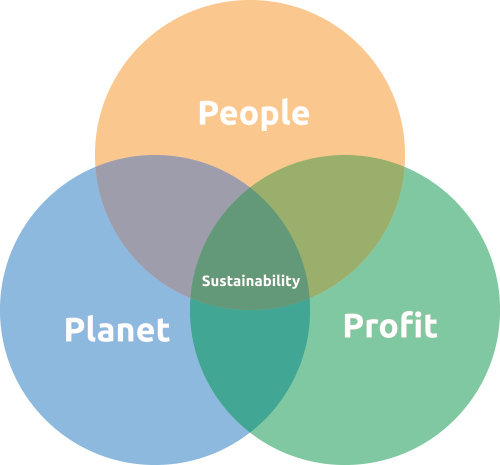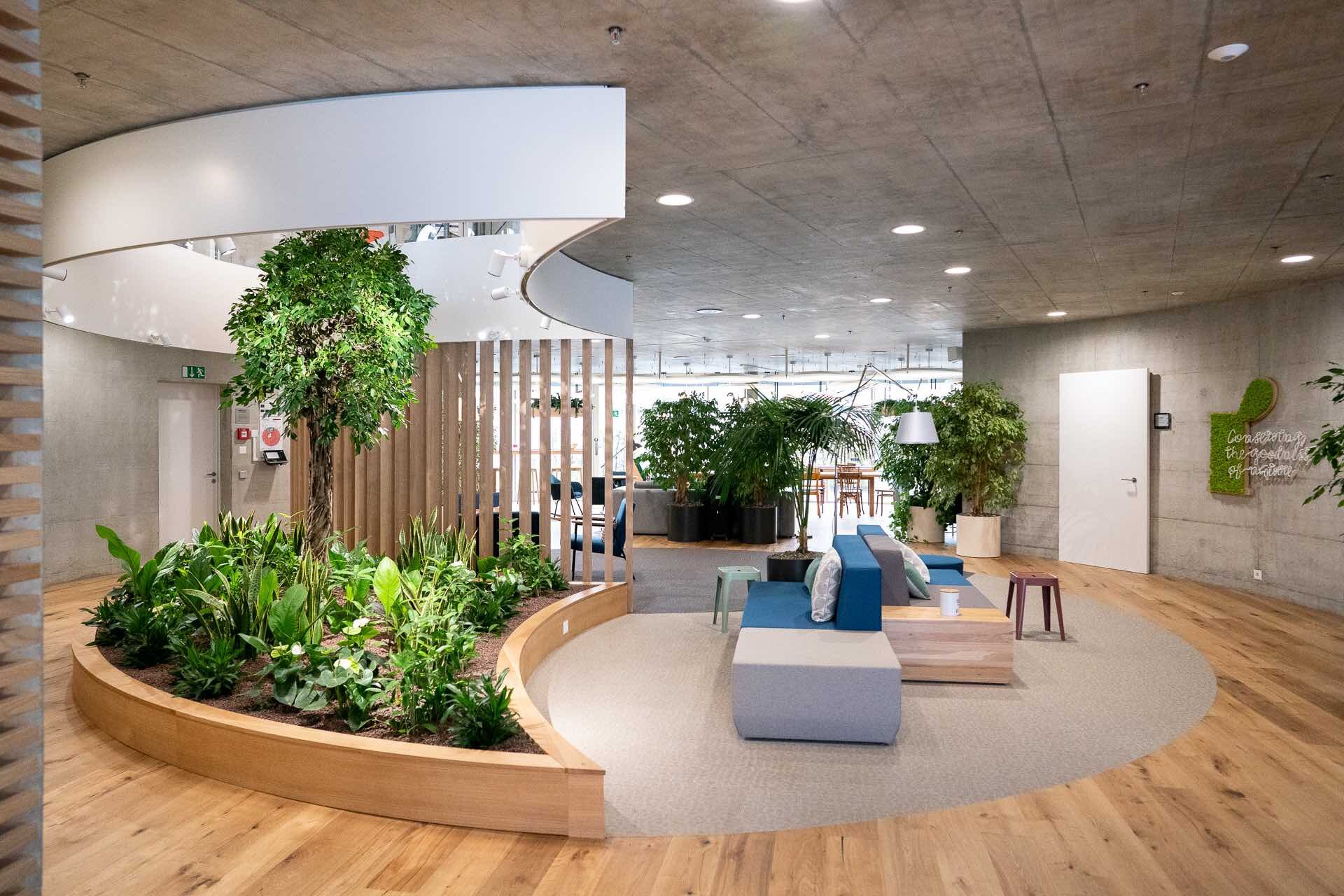Biophilic Design for People, Planet and Profit
As the world becomes increasingly urbanized, lifestyle convenience and stimuli typically increase while access to nature and green spaces decrease.
This represents a fundamental disconnect with our evolutionary history; biophilic design offers a time-proven solution to this contemporary challenge.
We define biophilia as the human love of or need for a close connection with nature and other forms of life.
When applied to modern lifestyles, ‘biophilic living’ is less about a return to hunter-gatherer times and is more to do with the respectful (re)integration of nature into our homes, offices, gyms, diets and beyond.
The last two centuries have seen a massive process of urbanization as entire populations transition from low density natural environments to heavily built metropolises with limited access to greenery, open spaces, and wildlife.
Simply put, biophilia and biophilic design are a modern response to that disconnect from nature.
It is an attempt to reunite indoor and outdoor worlds through the sensitive use of natural materials, shapes, breezes, colors, scents, and sounds in urban architecture and interiors.
THE TRIPLE BOTTOM LINE
The Triple Bottom Line (TBL) is a way of breaking down a business model by evaluating it from three different angles: human health, environmental sustainability, and financial gain - People, Planet, and Profit.
People: Measures social responsibility, what is a business doing to further the health and wellbeing of its customers, or users, and the community around it
Planet: Measures environmental impact, how is a business protecting or positively influencing the earth
Profit: Measures what is gained, and there needs to be financial gain in order for the business to survive and continue to do good for People and Planet
PEOPLE: SOCIAL RESPONSIBILITY
Only more recently has there been emphasis placed on People in terms of our built environment.
Current thinking however posits that buildings and interiors should not only be green but also healthy, actively contributing to the mental and physical wellness of its users, be they residents, office workers, patients or students
Biophilic design falls in line with this view, as people who spend time in biophilic spaces experience a plethora of benefits that extend to both physical and mental health.
Here are a few noteworthy examples:
A BIOPHILIC HOSPITAL EXPERIMENT
A 1993 study by Dr. Roger Ulrich focused on biophilic design applied to various settings, one of which was a windowless, hospital emergency room.
They traded blank walls and artificial furnishings for a design that aimed to connect people with nature through potted plants, furnishings made from natural materials, and a colorful wall mural of plants and animals in a Savannah-like setting.
The result? A significant decrease in stress and aggressive behavior among patients, as well as improved recovery speeds of 8.5% compared with those facing brick walls. Multiply that small gain out over the entire healthcare system though, and the cost savings are considerable.
Not only did the results of this study give us a glimpse of the power of a connection with nature, it showed that the positive impact can also be present when nature is indirect and merely representational.
This simple biophilic design element is a potent way to improve the hospital experience—biophilic design doesn’t have to be difficult to be powerful.
Hero offices Switzerland, Biofilico consultancy
A HEALTHY WORKPLACE
Hard evidence for the power of biophilic design in the workplace comes from a recent study undertaken by Professor of Organizational Psychology and Health Sir Cary Cooper entitled ‘Biophilic Design in the Workplace’ that surveyed a sample of 3600 office workers across Europe and the Middle-East.
The results showed that office environments incorporating natural elements such as internal green spaces, natural light and an abundance of plants ensure higher levels of employee creativity, motivation, and wellbeing.
RECHARGE ROOMS
In an era filled with high-stress jobs and tech fatigue, recharge rooms are a growing trend in workplace wellness programs. Whether presented as somewhere for stretching and yoga, a quiet room for focused bursts of concentration and productivity, as a chill-out meditation space or even a games area, recharge rooms are somewhere for workers to — you guessed it—recharge their batteries during the workday.
This can help lead to less stress, better productivity, more creativity, as well as better physical and mental health.
For more on Biofilico’s healthy office project for HERO Switzerland see this page.
PLANET: ENVIRONMENTAL IMPACT
FITWEL, standing for Facility Innovations Toward Wellness Environment Leadership, was launched in March 2017 and has currently impacted over 250,000 building occupants with over 380 projects around the world.
They take a data-driven approach with a database of over 3000 academic studies backing up their efforts to inspire healthier workplaces and residential communities specifically.
Certification systems such as the US Green Building Council’s LEED have given architects and interior designers a clear structure and format to follow, as well as increasingly prestigious ratings that add tangible value for building owners (Profit) and their occupants (People) whilst reducing the impact of buildings on the environment
Hero offices Switzerland, recharge room by Biofilico
Buildings and interiors that respect the planet, doing no harm to the environment and in some cases even giving back, are often described with terminology such as green buildings or sustainable buildings.
This approach—one that priorities concerns for nature—is literally built into the biophilic design value system. We love what nature can do for us, so we respect and protect her in return, it's a symbiotic relationship.
One key insight here is that the materials chosen for an interior space will not only influence the final ambiance but also impact the users’ health and wellness, largely by avoiding materials that off-gas harmful toxins and Volatile Organic Compounds (VOCs).
Opting for materials that are natural and sustainable will help ensure that both a room’s users and the planet stay healthy. Good materials to consider in this sense include FSC wood, bamboo, linen, cork, and ceramic.
Using organic material can lessen the presence of harmful chemicals that are regularly found in building materials and furniture—think benzene, formaldehyde, and trichloroethylene.
PROFIT: RESPONSIBLE BUSINESS
Although organic design stretches back as far as the 30s, sustainable, eco-friendly buildings, and biophilic design in particular are concepts that have been introduced into mainstream design only over the past 20 years or so.
As we have argued above however, the inspiration is simply to seek a more evolutionary concordant relationship with nature whilst living a 21st century existence.
OUTSIDE-THE-BOX GAINS: EMPLOYEE RETENTION
We’re seeing more and more biophilic design used by large companies dealing in billions of dollars of annual revenues and tens of thousands of highly qualified, highly sought-after knowledge workers, Why?
Employee satisfaction and office productivity are crucial in maintaining a competitive edge. Yes, these companies are intent on using responsible architecture and renewable energy sources but they are also exploiting the latest research that explores the intersection between neuroscience and biology.
Other examples of ‘profit’ derived from biophilic design include:
Improved productivity & creativity for staff in the workplace
Higher prices on real estate sales and hotel rooms with a view of nature
Opportunity to improve brand image through the office environment
Conclusion
While it may be instinct to devote your focus purely to profits, turning some attention toward environmental efforts and social consciousness holds an arsenal of benefits—which often includes increasing profits.
Biophilic design is a way to tap into the power of not only nature, but of the 3 P’s: People, Planet, and Profit. And in time you will find that they often overlap and feed each other to cultivate a happy, healthy, and thriving business in today’s society.



